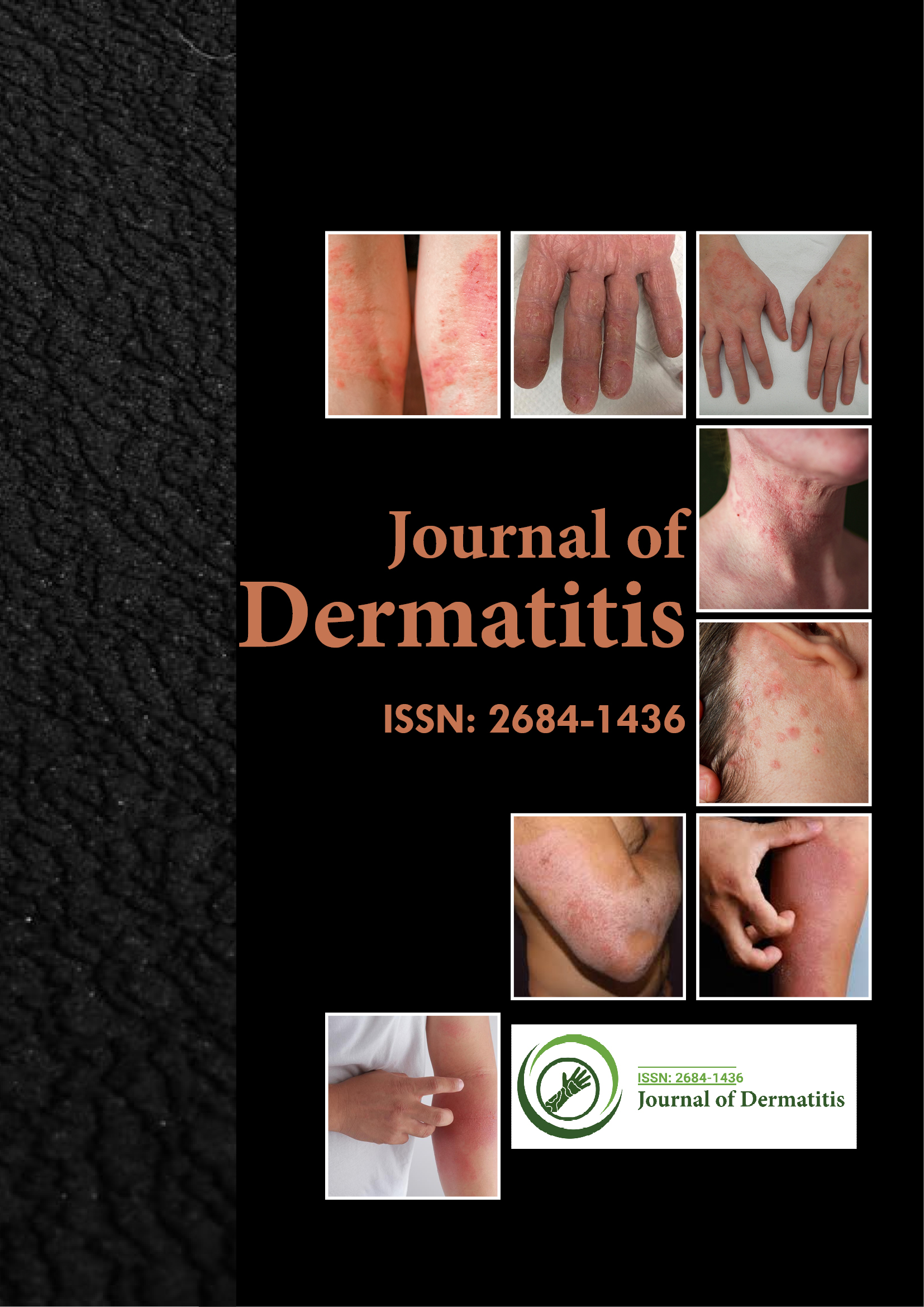Indexed In
- RefSeek
- Hamdard University
- EBSCO A-Z
- Euro Pub
- Google Scholar
Useful Links
Share This Page
Journal Flyer

Open Access Journals
- Agri and Aquaculture
- Biochemistry
- Bioinformatics & Systems Biology
- Business & Management
- Chemistry
- Clinical Sciences
- Engineering
- Food & Nutrition
- General Science
- Genetics & Molecular Biology
- Immunology & Microbiology
- Medical Sciences
- Neuroscience & Psychology
- Nursing & Health Care
- Pharmaceutical Sciences
Opinion Article - (2023) Volume 8, Issue 1
Overview of Causes and Treatment for Seborrheic Dermatitis
Woon Yun*Received: 02-Jan-2023, Manuscript No. JOD-23-20655; Editor assigned: 04-Jan-2023, Pre QC No. JOD-23-20655 (PQ); Reviewed: 18-Jan-2023, QC No. JOD-23-20655; Revised: 25-Jan-2023, Manuscript No. JOD-23-20655 (R); Published: 01-Feb-2023, DOI: 10.35248/2684-1436.23.08.180
Description
Seborrheic dermatitis is a common skin condition that affects many people around the world. It is a chronic and inflammatory disorder of the skin, characterized by red, scaly, and itchy patches on the scalp, face, ears, chest, and back. Although the exact cause of seborrheic dermatitis is unknown, it is believed to be associated with the overgrowth of a yeast-like fungus called Malassezia, as well as genetic and environmental factors.
Causes of seborrheic dermatitis
Several bacteria, especially the following, may lead to seborrheic dermatitis:
Malassezia fungus: The overgrowth of the Malassezia fungus is one of the primary causes of seborrheic dermatitis. This fungus is naturally present on the skin, but when it grows excessively, it triggers an immune response, leading to skin inflammation and flaking.
Hormonal changes: Seborrheic dermatitis can be triggered by hormonal changes, such as those that occur during puberty, pregnancy, and menopause. These changes can alter the natural balance of oils on the skin, making it more prone to irritation.
Genetic factors: Seborrheic dermatitis tends to run in families, suggesting a genetic component to the condition. People with a family history of eczema, psoriasis, or rosacea may be more likely to develop seborrheic dermatitis.
Neurological disorders: Certain neurological disorders, such as Parkinson's disease and epilepsy, are associated with seborrheic dermatitis. It is believed that these conditions may disrupt the normal functioning of the nervous system, leading to skin inflammation.
Treatment of seborrheic dermatitis
The following list includes numerous methods of healing seborrheic dermatitis:
Antifungal medications: Antifungal medications, such as ketoconazole and ciclopirox, are often prescribed to treat seborrheic dermatitis. These medications help to reduce the growth of the Malassezia fungus and relieve symptoms.
Topical steroids: Topical steroids, such as hydrocortisone, can be used to reduce inflammation and itching associated with seborrheic dermatitis. However, long-term use of these medications can lead to skin thinning and other side effects, so they should be used with caution.
Topical calcineurin inhibitors: Topical calcineurin inhibitors, such as tacrolimus and pimecrolimus, can also be used to treat seborrheic dermatitis. These medications help to reduce inflammation and itching without the side effects associated with topical steroids.
Shampoos and soaps: Shampoos and soaps that contain salicylic acid, selenium sulfide, or zinc pyrithione can be effective in reducing the symptoms of seborrheic dermatitis on the scalp. These products help to reduce the growth of the Malassezia fungus and remove dead skin cells.
Lifestyle changes: Certain lifestyle changes, such as reducing stress, avoiding harsh chemicals and detergents, and maintaining good hygiene, can also help to prevent and manage seborrheic dermatitis.
To prevent or reduce the biological hazards, it is important to seek medical advice and follow a proper treatment plan for seborrheic dermatitis. Treatment options may include topical or oral medications, shampoos, moisturizers, lifestyle changes, or phototherapy. Treatment goals are to control the symptoms, reduce inflammation and scaling, prevent infections and complications, and improve the quality of life of the affected person.
Seborrheic dermatitis is a common skin condition that can cause significant discomfort and embarrassment. Although the exact cause of the condition is unknown, it is believed to be associated with the overgrowth of the Malassezia fungus, hormonal changes, genetic factors, and neurological disorders. Treatment options include antifungal medications, topical steroids, topical calcineurin inhibitors, shampoos, and soaps, as well as lifestyle changes.
If they are experiencing symptoms of seborrheic dermatitis, it is important to consult a dermatologist for an accurate diagnosis and appropriate treatment.
Citation: Yun W (2023) Overview of Causes and Treatment for Seborrheic Dermatitis. J Dermatitis.8:180.
Copyright: © 2023 Yun W. This is an open-access article distributed under the terms of the Creative Commons Attribution License, which permits unrestricted use, distribution, and reproduction in any medium, provided the original author and source are credited.

